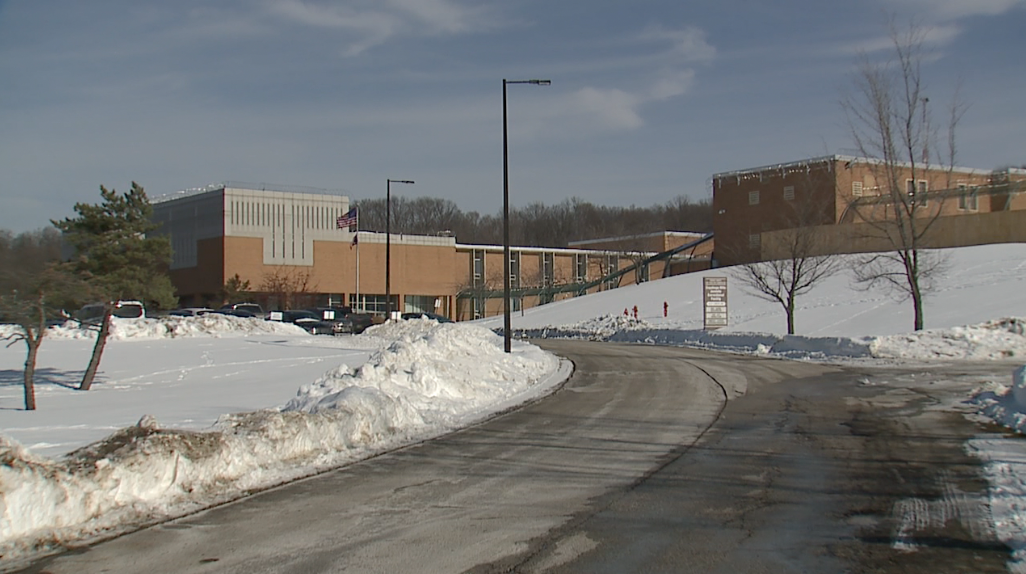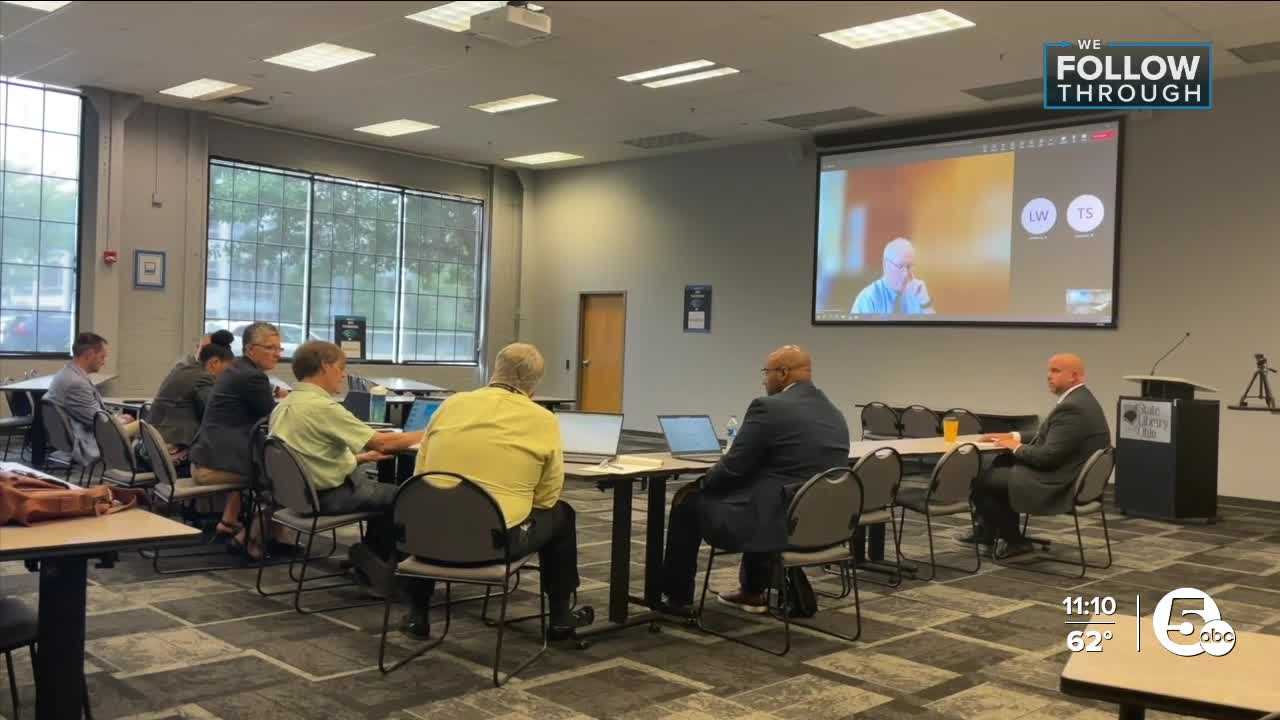COLUMBUS, Ohio — A report commissioned by the Ohio Department of Youth Services R.E.C.L.A.I.M. advisory board found that their juvenile program did not put the public at risk. The study comes after the program drew attention tied to the suspect in Cleveland Police Officer Shane Bartek's murder case.
The program, which stands for “Reasoned and Equitable Community and Local Alternatives to the Incarceration of Minors,” currently offers fiscal incentives to county juvenile courts if they keep their incarcerated youth population down. That funding is then used for alternative rehabilitation programs for juveniles.
The report pointed to a 40% decline in juvenile arrests for robbery and weapons charges between 2010 and 2020. During the same time period, researchers said they also found an almost 40% decline in teens in juvenile facilities.
"What the study told us is there’s no risk to public safety with the way judges are utilizing their R.E.C.L.A.I.M. money," Dr. Amy Ast, D.Y.S. director, said. "I think this past fiscal year we served 20,000 kids in the state of Ohio, and the majority of those never step foot in a D.Y.S. facility."
As a result, the report's summary repeated several variations of the following:
“We can claim with confidence that retaining higher risk youths in the community has not had an adverse effect on crime. Community alternatives encouraged by R.E.C.L.A.I.M. are cost effective and are not putting the state at risk.”
The murder of Cleveland Police Officer Shane Bartek
The question of incarceration versus probation garnered attention after it came to light that 18-year-old Tamara McLoyd, the woman accused of murdering Cleveland Police Officer Shane Bartek, had been in and out of trouble for years in the juvenile court system.

We don’t just report the initial story—we follow through to its conclusion. Read and watch our previous reporting on this story below and see more stories that we've followed through on here.
It started in 2017 when a then-14-year-old McLoyd was found delinquent in Cuyahoga County Juvenile Court on assault charges and was sentenced to probation, according to county records.
A year later, those records show McLoyd was back in trouble, charged with domestic violence. Once again, court records show she was sentenced to probation.
In 2020, Cleveland police said McLoyd punched a woman in the face outside a cookout in the city's Hough neighborhood, then returned with a gun and shot at the woman.
Records show that case was later dismissed, but not before McLoyd was back in trouble.
RELATED: Off-duty Cleveland police officer killed in carjacking identified
In October 2020, a Kipton man told Lorain County deputies that two men pulled guns on him and robbed him in his home after meeting with a woman he messaged on the dating website "Plenty of Fish."
Investigators said the woman was a then-17-year-old McLoyd.
Court records show the teen cut a deal with prosecutors and again received probation on Oct. 28, 2021.
On Jan. 13, the Lorain County Prosecutor's Officer released this statement regarding the handling of McLoyd's case:

The timeline shows a pattern where McLoyd was not incarcerated in the Department of Youth Services (DYS) system, and some have tied this pattern to an unintended effect of the R.E.C.L.A.I.M. program.
McLoyd is currently serving a life sentence following her August 2022 conviction for Bartek's murder.
The spotlight on R.E.C.L.A.I.M. following the McLoyd case
Last year, News 5 highlighted how Cuyahoga County prosecutor Michael O’Malley called out the state’s R.E.C.L.A.I.M. program, which was originally intended to prevent overcrowding at juvenile detention centers and rehabilitate teens.
“They have put cash incentives to not hold kids accountable for their violent crimes, and it's wrong,” O’Malley said during an interview in January.
“It may appear to some that finances were involved in the decision to put her on probation,” O’Malley said in January 2022. “I don't know if that's the case. Judges shouldn’t be in the position where people second-guess what their decisions were based upon. It’s all 20/20 now, but what we need to do is eliminate that question mark.”
Following those remarks, R.E.C.L.A.I.M.'s advisory board agreed to commission a study looking at the program’s past three years.

“When public officials in the media raise questions about programs connected to our agency, we need to listen and do our best to provide answers,” Ast said in February 2022. “What we heard today from the judges is R.E.C.L.A.I.M. is working. If there's any opportunities for us to make improvements, that’s what this study will tell us.”

The new report, completed last December but not finalized or released until June, does not mention McLoyd, Bartek or any specific case.
Instead, it looks at the formula used to allocate funding and whether or not it should be changed. The report and the questions researchers were told to answer did not address the concerns of those who questioned whether or not the financial formula should exist altogether.
At a R.E.C.L.A.I.M. advisory board meeting Friday, leaders called the report a reaffirming success.
"The most important thing for our courts and for our R.E.C.L.A.I.M. dollars is that we get the right kid in the right environment getting the right services," Ast said. "That’s our responsibility."
Over the years, R.E.C.L.A.I.M. has evolved several times, and so has the formula used to determine a local court’s funding.
However, the report went on to say that it does not recommend changing the formula it uses to allocate funding, arguing that could favor larger counties by pulling money away from smaller counties.

"I think the value of R.E.C.L.A.I.M. is it’s not just the largest metro areas; even our rural areas have needs, and R.E.C.L.A.I.M. can provide funding for resources to serve those kids," Ast said.
News 5 circled back with O'Malley's office following the report's release. A spokesperson with his office said they do not have a takeaway from that report.
Additionally, News 5 reached out to several other area prosecutors as well as former judges. None agreed to speak on camera about the report.
CLICK HERE to read the full report.
To learn more about the R.E.C.L.A.I.M. program and how funding is determined, CLICK HERE.





